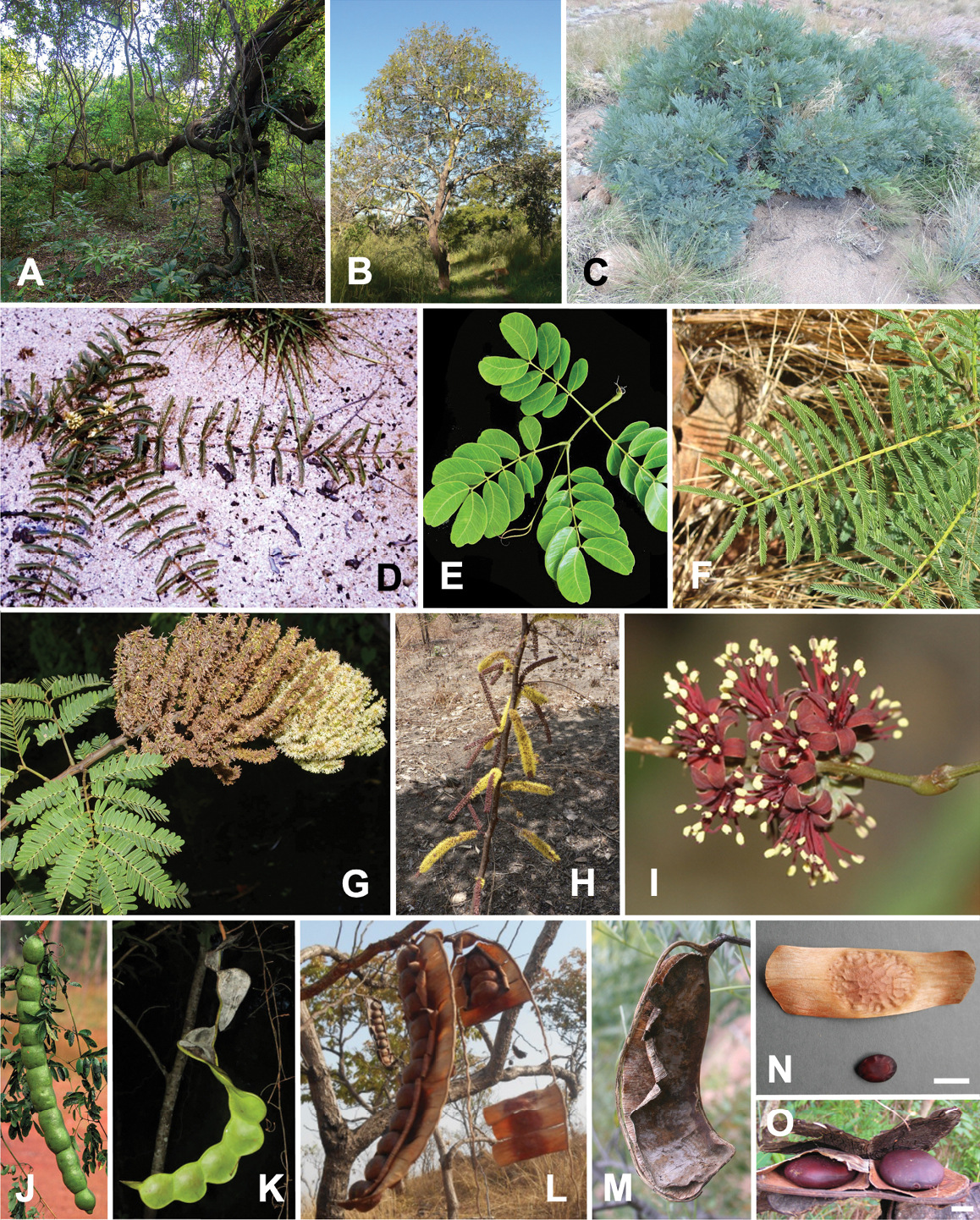
|
||
|
Genus-wide variation in morphological characters. A–D habit A large woody liana, E. rheedei (photo: B Wursten, Hyde et al. (2021)) B small tree, E. abyssinica (photo: G Baumann, Dressler et al. (2014a)) C shrub, E. burkei (photo: M Schmidt, Dressler et al. (2014a, b)) D geoxylic suffrutex, E. dolichorrhachis (photo: M Bingham, Bingham et al. (2021)) E, F leaves E bipinnate leaf with few pinnae, few large leaflets and ending in a bifurcating tendril, E. rheedei (photo: AP Balan, Balan and Predeep (2021)) F bipinnate leaf with many pinnae, many small leaflets and no tendril, E. rangei (photo: A Dreyer, Dressler et al. (2014a)) G–I inflorescences G terminal panicle of up-turned spikes, E. polyphylla (photo: R Vásquez Martínez, CC BY-NC-SA 3.0, MBG (2021)) H axillary fascicles of spiciform racemes, E. goetzei (photo: G Baumann, Dressler et al. (2014a)) I short spiciform raceme of dark red flowers, E. wahlbergii (photo: R Mangelsdorff, Dressler et al. (2014a)) J–M fruits J immature, weakly falcate, segmented craspedium up to 2 m long, E. rheedei (photo: photographer unknown, Centre for Australian National Biodiversity Research (CANBR), 2000) K immature, segmented, laxly spiralled craspedium up to 120 cm long, E. gigas (photo: R Aguilar CC BY-NC-SA 2.0, Aguilar (2021)) L ripe segmented craspedia breaking up into one-seeded segments with exfoliating epicarp, E. africana (photo: B Eichhorn, Dressler et al. (2014a)) M ripe unsegmented craspedium, the entire valve breaking away from the persistent replum, E. burkei (photo: M Kriek CC BY-SA 4.0, Ueda (2021) observation 85675968) N, O seeds N one-seeded endocarp segment and small ovoid, flattened seed with elliptic pleurogram, E. africana (photo: B Eichhorn, Dressler et al. (2014a)) O ripe one-seeded fruit segments with large circular, laterally compressed seeds lacking a pleurogram, E. gigas (photo: J Stevens, Dressler et al. (2014a)). Scale bars: 1 cm (N, O). |